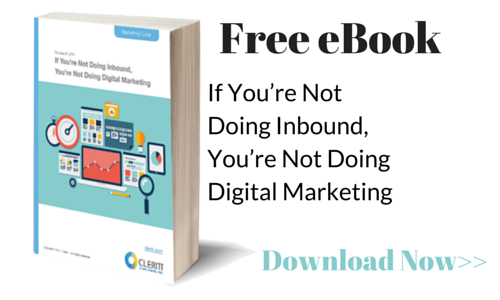- May 13, 2015
- By Lauren Lutz
- In Content Marketing
Would You Date Your Buyer Persona?


Every single out there has made a list of the characteristics their ideal mate would have. And, even if it feels silly to do, it can be a good idea because it helps you figure out what you're looking for in a companion. The process of crafting a buyer persona for your business isn’t much different from envisioning your perfect partner. The degree of detail you compile really solidifies how complete your buyer persona is -- or rather how dateable it is! -- so give it the love it needs.
What Is a Buyer Persona?
A buyer persona is a composite that represents a specific type of ideal customer, so it’s worth the work to make it as detailed as possible. You'll develop a name, an age and other demographic information that will give insight into how you can meet the needs of your typical buyers. The persona's profile will also include details like the buyer's pain points, motivations, concerns and feelings on yoga, piña coladas and getting caught in the rain (sorry, we’re really running away with this analogy).
Most businesses will have several buyer personas, and each one can represent a specific customer type. To get some ideas for creating yours, check out your CRM and other data to look for traits that buyers have in common. You can even send out an email survey or conduct interviews to dig really deep and craft the most applicable personas possible. Here’s an example: if you're a B2B firm, you may notice that your customers who are VPs at midsize businesses tend to have similar needs. They could form the basis for one persona. Other client types with different buying habits can form the basis of others.
Adding buyer personas to your strategy makes your marketing far more effective. According to HubSpot, websites that use buyer personas in their marketing are two to five times more effective, as well as easier for customers to navigate, than websites that don't.
Give Them a Little Romance...
Once you've defined your buyer personas, you can begin creating marketing materials personalized to their needs. You would probably write a different note to the guy you started dating last week than you would to your fiancé the day before your wedding. And, it's just the same with your buyer personas. The way that you communicate should be geared toward each individual type. For instance, emails that are personalized have a click-through rate that is 14% higher and a conversion rate that improves by 10% in comparison to non-personalized ones. When your buyer feels that each marketing communication was created with just their needs in mind, you are far more likely to close the deal.
...And a Bit of Focus.
If you're internet dating, you don't email an identical introduction message to every different person you meet. Persona-based marketing is similar. Using filters to target certain buyer personas, you can direct various types of content and ads meant only for people who fit that specific niche. This way, your advertising dollars are spent in a much more focused way. You cut down on wasted impressions and get more qualified prospects.
Additionally, you can direct your best efforts in the area where they pay off most. If people similar to Buyer Persona Bob tend to buy 50% more each time and have a customer life that is 75% longer than Buyer Persona Jill or Dale, then it only makes sense to direct more of your marketing budget toward wooing customers like Bob.
Find Your Perfect Match
Before you begin formulating any marketing plan, start with your buyer personas. Study the people who buy from you and the people you would like to engage with most. Once you know who these people are, you can strategize about what to say to win their hearts. Gear your marketing tactics directly toward wooing these customers, and it will be the start of a beautiful relationship.





